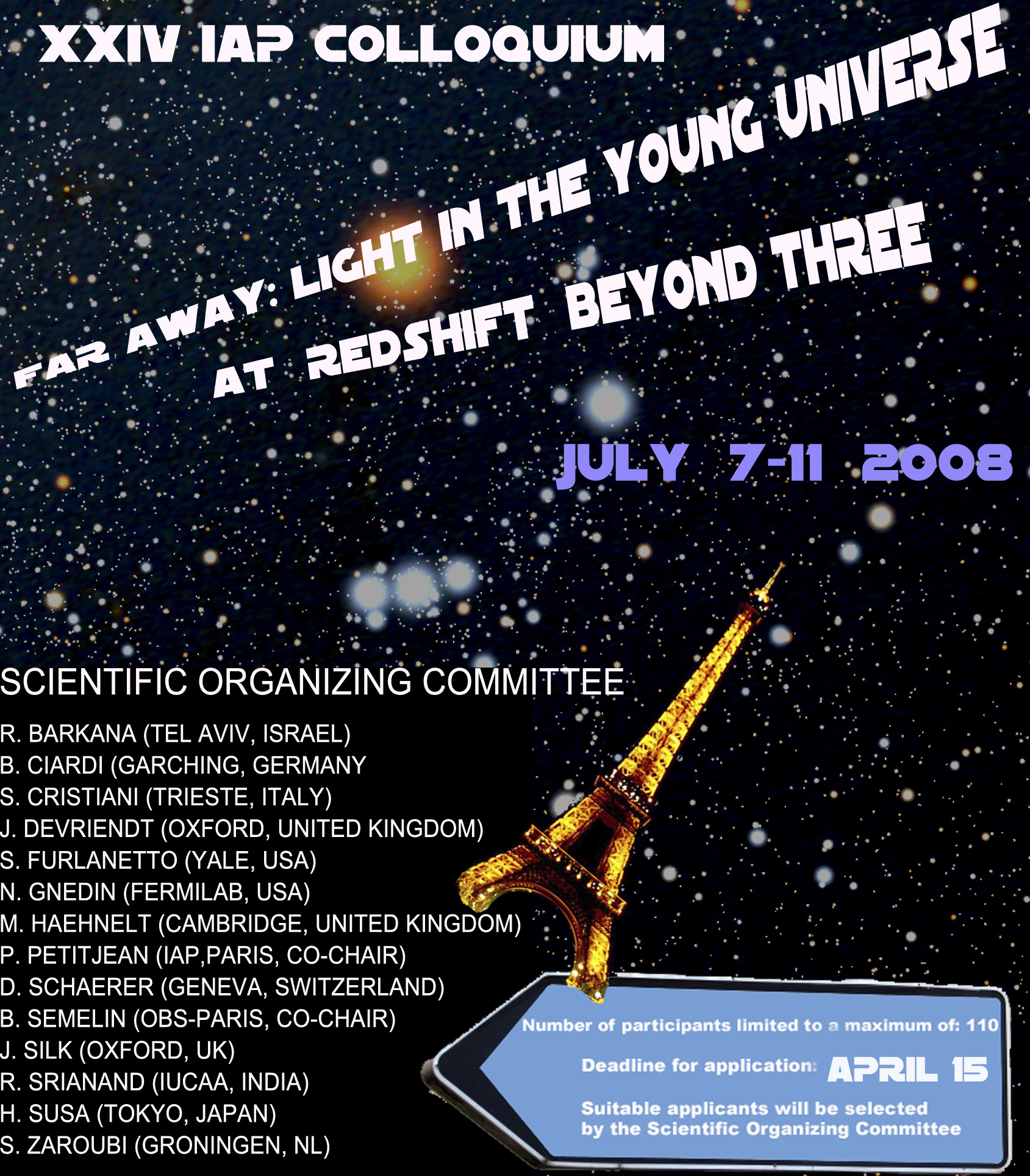Local Organizing Committee
Delphine
CHARBONNEAU (IAP, France)
Françoise COMBES (Observatoire de Paris, France)
Elisabeth
VANGIONI (IAP, France)
Patrick
PETITJEAN (IAP, France)
Benoit
SEMELIN ( Observatoire de Paris, France)
Emmanuel
ROLLINDE DE BEAUMONT (IAP, France)
Romain
TEYSSIER (CEA Saclay, France)
 (for practical information only!)
(for practical information only!)
|

Motivation:
The first sources of light and their impact on the early universe is still a largely uncharted territory in Astrophysics.
In recent years the main physical processes have been investigated through numerical simulations and theoretical models, and a more precise vision
of the reionization and the end of the dark age is forming.
Quasars and starburts at redshifts z=3 to 6 are currently studied at all wavelengths. The Hubble Space Telescope is discovering and imaging faint
objects, while large optical and infra-red instruments obtain their spectrafrom the ground. ALMA will soon discover a multitude of high-z sources,
followed by the future Space telescope and ELTs. The 21cm line, tracing the reionization of the universe directly, will be mapped with LOFAR and the SKA
precursors.
It is timely to bring together scientists working in this domain, to refine the predictions of models, and confront them with the growing body of observations
concerning this early epoch.
The meeting will discuss the most recent observations in this redshift range, and state-of-the-art models and numerical simulations. It will
cover the following topics:
-- The 21cm line during reionization
-- Scenarios for reionization
-- First stars and high-z quasars
-- Star formation history in the early universe
-- Absorption signatures by the IGM
-- GRBs as tracers of the remote universe
-- The role of feedback and environment
|





